Organic Vegetable Garden Diary (June 3) & Harvesting Garlic
It’s been 2 weeks since my last organic vegetable garden post, I figured that there just wasn’t enough to report on weekly. But a lot has happened in 2 weeks.
My cucumbers have more than tripled in size and I have harvested 2 cucumbers, with more to be harvested tomorrow or the next day. And I’m LOVING my trellis. It keeps the cucumbers in order, shades my lettuces and looks great…Functional Aesthetics again! We also began harvesting garlic that we planted last fall.
We dug up our 16 heads of garlic, dried them, trimmed them and braided them. Despite our garlic harvest, we were a bit disappointed that we didn’t get any garlic scapes this year. Note to self for next year: only the hardneck Rocombole variety of garlic produces scapes. Some of the more common and popular types of hardneck garlic are ‘Carpathian’, ‘German Red’ and ‘Spanish Roja’. I couldn’t even tell you what type of garlic we planted this year, but it clearly wasn’t a hardneck. Rats…we were so looking forward to Garlic Scape Pesto!
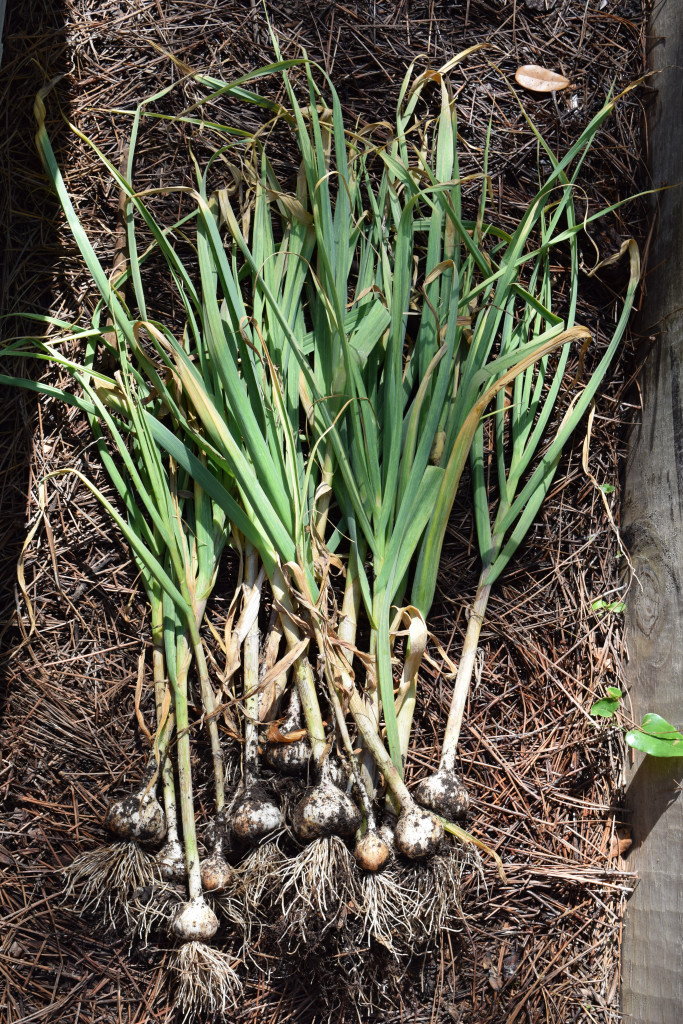
Growing and Harvesting Garlic
Plant your garlic cloves in the fall/winter, about 6 inches apart. Garlic is a heavy feeder, so it is recommended that you apply a low nitrogen fertilizer in the fall, to help establish root growth, and a higher nitrogen fertilizer in the spring to encourage leaf growth. These recommendations should be tempered by your individual soil and its analysis, but I use Happy Frog Bulb Food Fertilizer in the fall and Happy Frog Tomato & Vegetable 7-4-5 in the spring.
As a rule of thumb, you should plan on harvesting garlic when approximately 1/3 of the leaves begin to turn brown or pale. At that time, you can dig the soil away from one bulb to see if you can actually see the formation of the individual cloves. Use your spade and give a wide berth around your cloves to make sure you don’t ding any of them (not that I would know!)
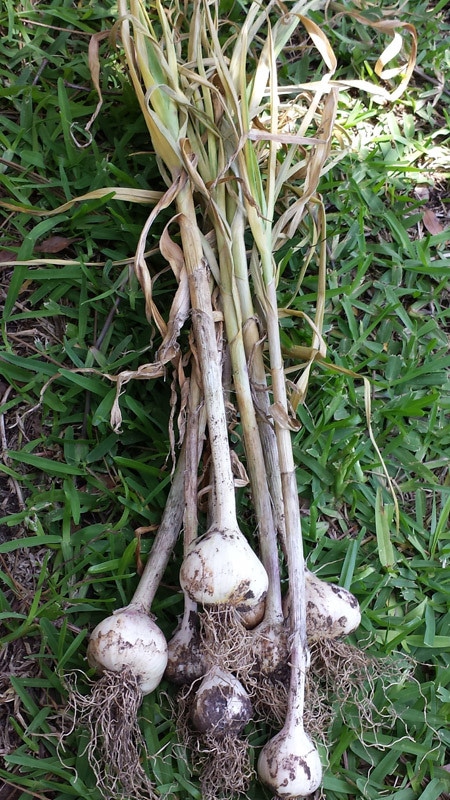
After you’ve harvested your garlic, let them sit in a well-ventilated area, out of the direct sun for several days. We placed ours on a screen so the air could move around them. Once they are good and dry, gently use your hands to wipe off some of the dirt, but don’t worry about getting all of it off. You don’t want to rub too hard and pull away the very thin, fragile paper surrounding your garlic bulb. It’s better to keep a little dirt than damage that paper.
You could absolutely eat your garlic now, but we have some in the kitchen already, so we decided to cure ours.
Trim the roots to 1/4-1/2 ” and hang your bulbs to cure for a good month before use. We braided ours at this time, but may wait a bit longer next year and the stalks still seemed rather fragile.
We immediately planted green bush beans in the space the garlic vacated.
So in the past week, we’ve harvested garlic, kale, leeks, and a cucumber! I’ve got my winter and summer crops crossing paths as we still have bunches of kale and my cucumbers are just starting to come on strong! Most of my leeks looked liked small onions…think I need to do some research before next year to figure out why.

I’ve got to show you my Roma tomatoes! The amount of fruit on my plants this year is incredible! Since Terry built my compost tea brewer for Mother’s Day, our garden has been getting twice-weekly doses of compost tea. We can only think that it’s the compost tea that is responsible for the incredible production mode that our garden is in right now. Terry counted the fruit on this one plant…right now we have more than 100 green tomatoes…on one plant! Without a doubt, this is the most productive my organic vegetable garden has ever been at this time of year. We’re preparing a post on the benefits of compost tea and how to build your own compost tea brewer. For years, I would get a gallon of tea from my local organic garden center, Progressive Gardens every now and again. This year, after a discussion with Evan at Progressive Gardens about all the many benefits of compost tea, I requested a 5-gallon compost tea brewer like this one for Mother’s Day. Not one to do things halfway, my sweet husband built a 30-gallon brewer for our garden.
On one of our morning garden tours, we did find some caterpillar droppings on this Roma. Terry and I spent a good bit of time over 2 days searching for the culprit, but he eluded us completely. Not wanting to put my bonanza Roma harvest at risk, I did spray just this one plant with BT (Bacillus thuringiensis), a naturally occurring bacterial disease of insects. (I use Safer Brand Caterpillar Killer). BT is particularly effective against caterpillars. It paralyzes their digestive system, rendering them unable to eat which then causes their death. What’s great about BT is that it is not a broad-spectrum insecticide and does not affect pollinators or other beneficial insects and is non-toxic to pets, people and other wildlife. That being said, I’ll always opt to get rid of all pests by pulling them off or preventing them all together before I’ll spray anything on my garden.
I’m also very pleased to see (and hear) an increase of bee activity in our garden this year. So is Flora! They are all over my cucumber flowers and my pollinator-attracting plants aren’t even in full bloom yet. This is a marked improvement over the past 2 years. Fingers crossed that our busy friends are rebounding. (I spy with my own eye a little bumble! Do you see it? Flora does!)
I hope your garden is off to a good start!
Right now, subscribers to Nourish and Nestle will receive a free, downloadable Measuring Equivalents Chart overlaid on a watercolor lemon. You can see it here. Sign up to our email list (on my right sidebar) and we’ll send it to your inbox within 24 hours! If you are already a subscriber and would like a lemon measuring equivalents chart, send us an email with ‘lemon chart’ in the subject line and we’ll send you one too!
Please come visit again. The easiest and most convenient way is to sign up on our email list and whenever there is anything new, we’ll send Nourish and Nestle updates directly to your inbox.
Until next time,

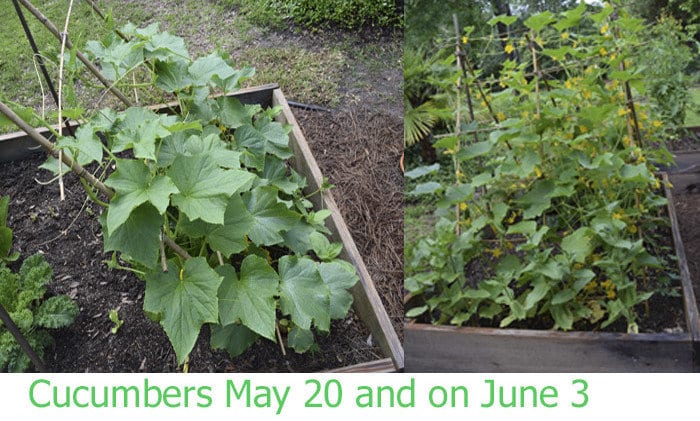
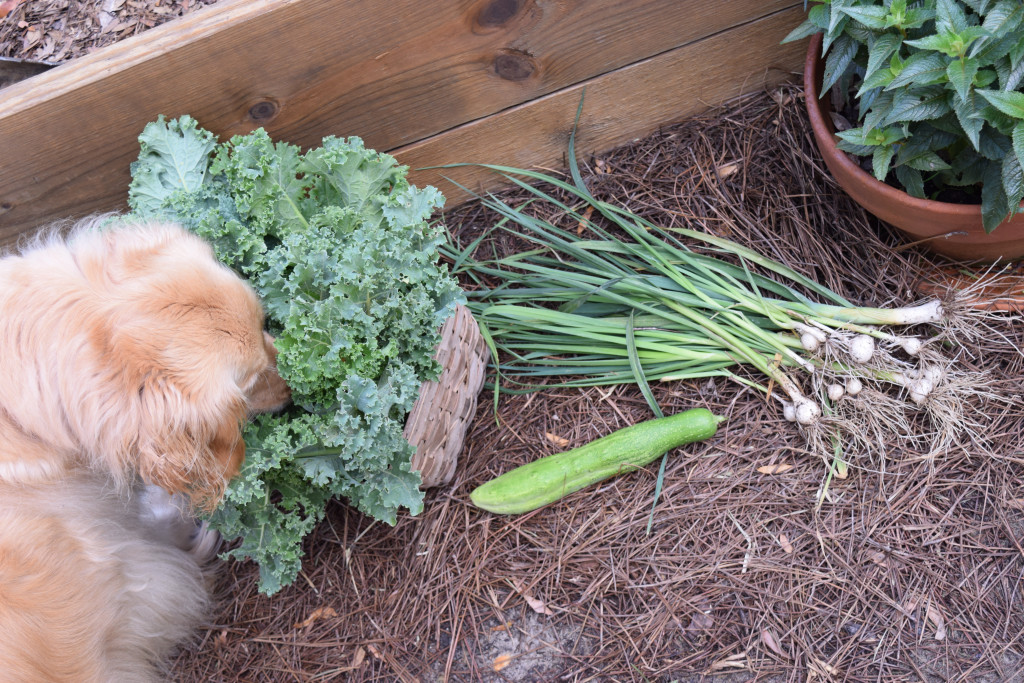
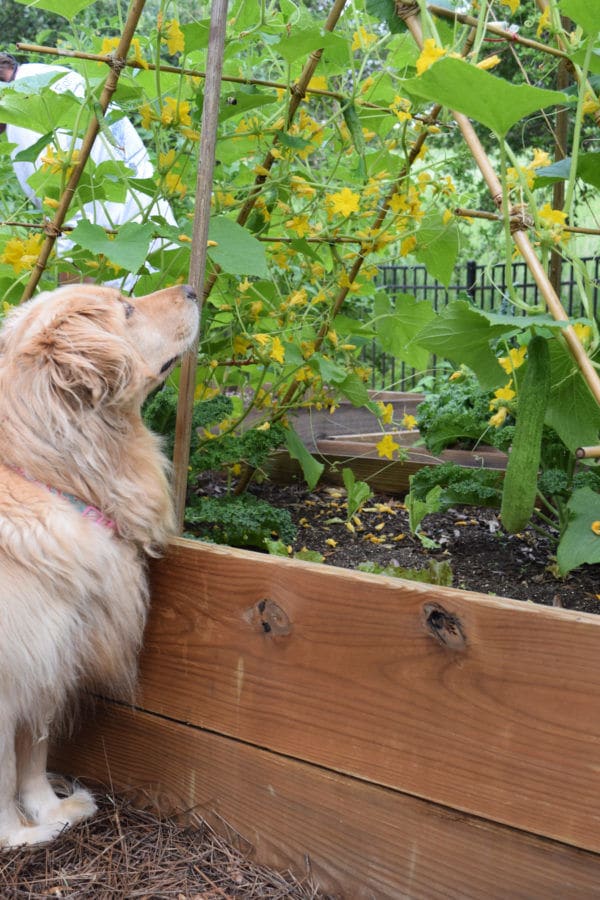

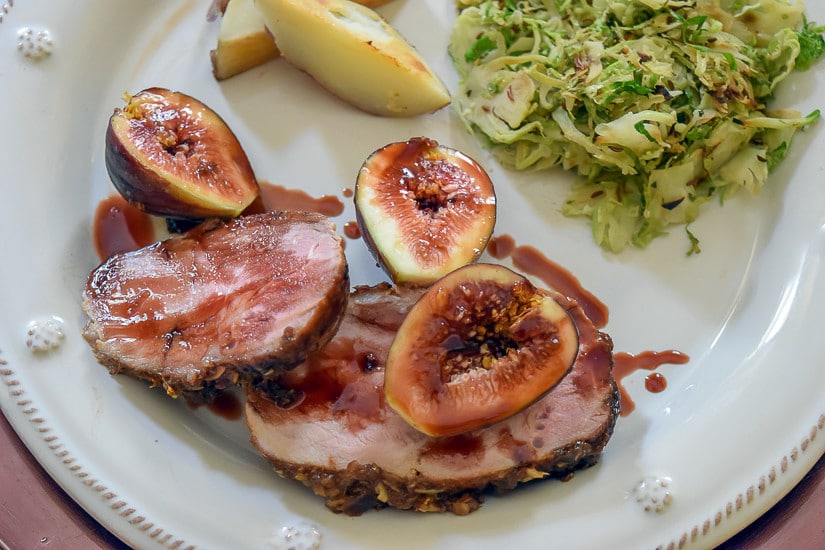
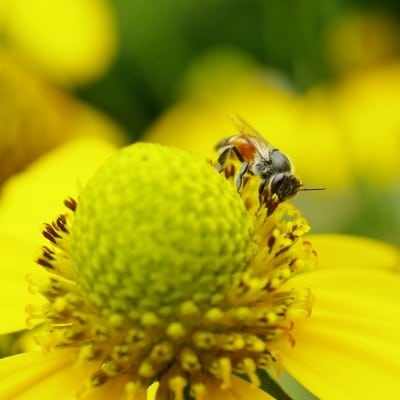
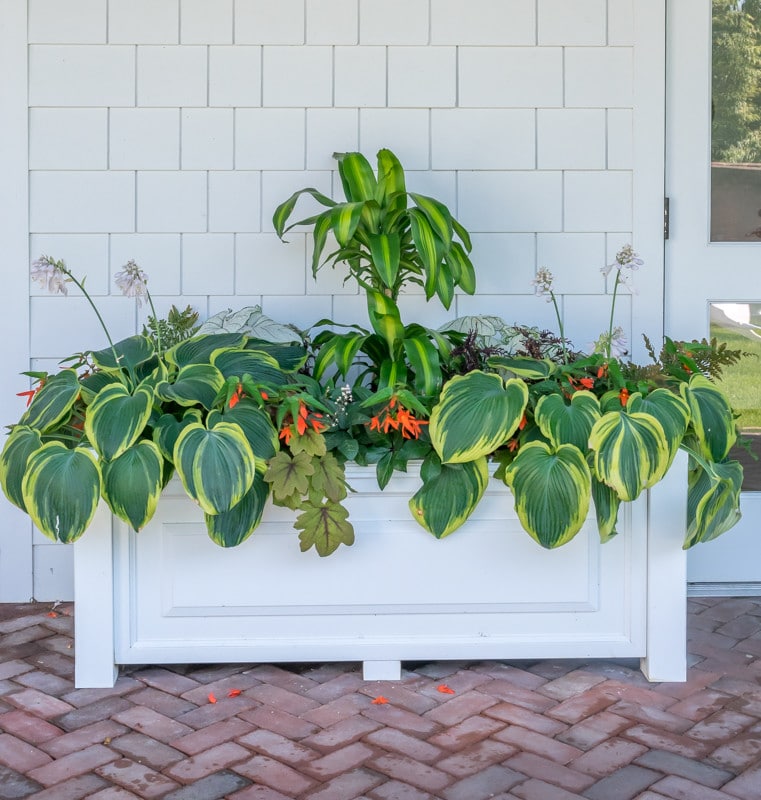

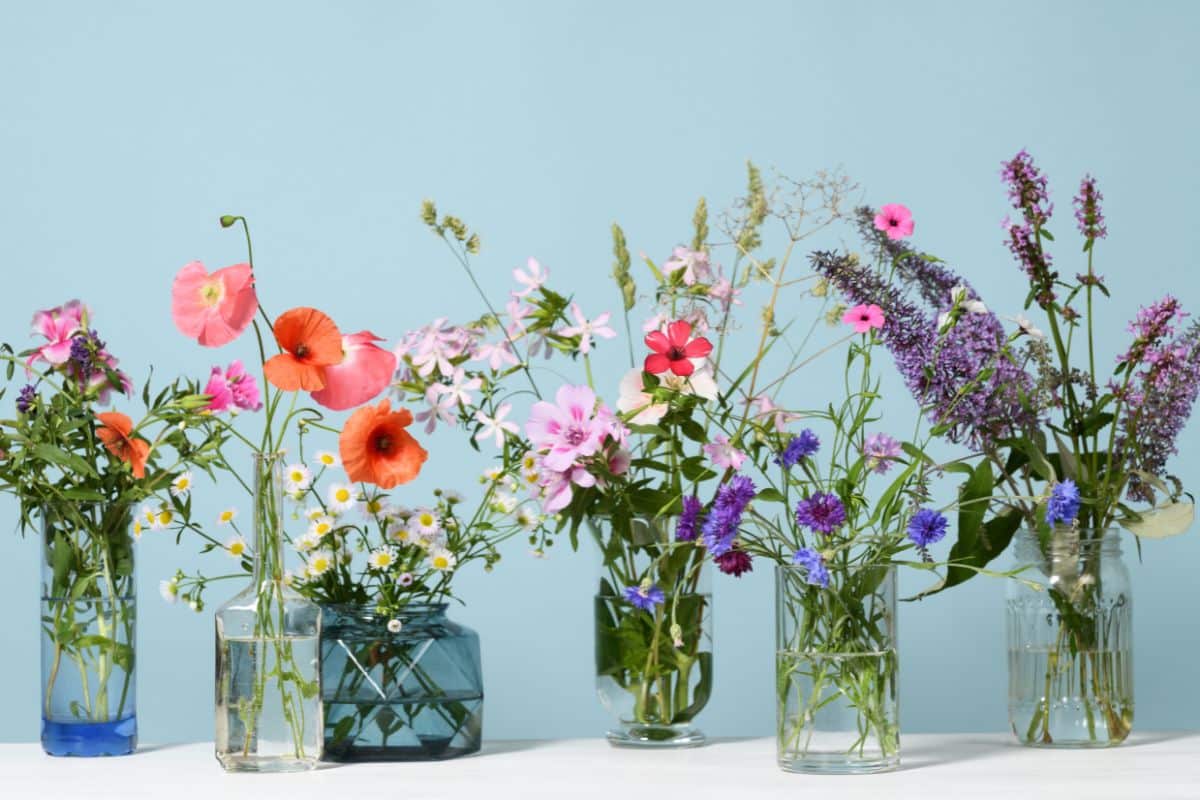
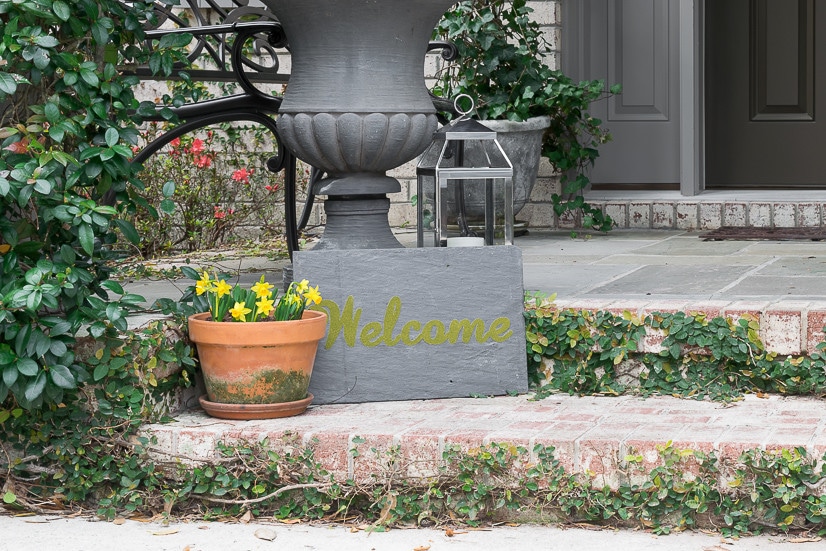
such a green thumb you have. I need to learn from you.
Hi Kellie…my green thumb comes and goes. Sometimes I feel like I have it all figured out and then other times I feel like I don’t have a clue! Thanks for coming by today.
Hugs, LYnn
Lynn, I wish I could plant all this, successfully, like you do here! My parents used to have a little green house and our garden was always like a fresh market cause you would find every fruit and veggie growing in it. Now I’d really appreciate that, but I can’t even get cherry tomatoes to make it here… Flora is adorable! i see the bumble bee too 🙂
So your weather is just too hot? We struggle with the humidity here, which makes my plants more prone to disease. But I imagined your heat is a dry heat and therefore a good growing environment. Guess it can just be too hot for some plants. I’m sorry! And my sweet Flora is just that…when she isn’t eating rat poison of course!
Happy Friday…Lynn
Lynn you have really been busy lately. I am a notorious brown thumb so I leave all of this to my husband. He goes to the farm, does what he has to do and comes home with the goodies. This year we even had a bit of broad beans which I love.